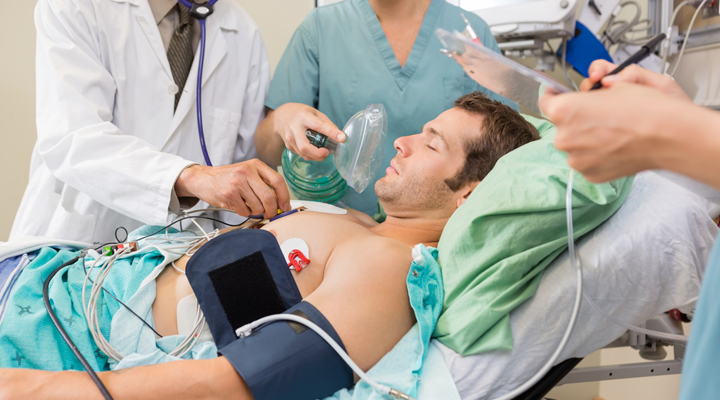Diabetes is a medical condition affecting millions of people today; this health issue also impacts the loved ones of people living with it. Correctly identifying a diabetic emergency and responding to it can help prevent illness, injury, and even death.
Dangerously High Blood Glucose Levels
Diabetes is characterized by the body’s inability to metabolize glucose; this process requires the presence of insulin, a hormone which is deficient in someone with Type I diabetes. Monitoring blood glucose levels with the help of a meter is an important part of controlling diabetes. Testing should be done throughout the day to track changes.
Without insulin, glucose in the blood will not be processed into the energy required for healthy bodily function and will continue to build up. The body will then seek out fat, the next available form of energy. Acids known as ketones are the byproduct of the body metabolizing fat and will build up in the urine and blood. Ketones are poisonous to the body and will cause tissue damage if their level rises too high. Diabetic ketoacidosis is the proper name for this dangerous condition.
Checking for Ketoacidosis
Ketoacidosis can be detected using a simple urine testing kit available at any pharmacy. This test should be conducted every 4 – 6 hours when a person with diabetes has these signs and symptoms:
- Has a dry mouth or is unusually thirsty
- Is urinating frequently
- Has a blood glucose level of 240 or higher
- Is sick with vomiting, nausea, or dehydration
The warning signs that signal dangerously high levels of ketones are deep, rapid breathing, flushed face, vomiting or nausea, dry mouth and skin, a fruity odor on the breath, and stomach pain. If these signs are detected, call a doctor right away or go directly to the emergency room. Prompt response can prevent coma or death.
Dangerously Low Blood Glucose Levels
When blood glucose levels get hazardously low the condition is called severe hypoglycemia. This condition develops when a person with diabetes has used too much insulin, has not eaten enough food, or has exercised too hard or too long. Symptoms of severe hypoglycemia include:
- Headache
- Sweating
- Shaking
- Hunger
- Nervousness
A glucose monitor reading of 70 or below can confirm a hypoglycemic state. Hypoglycemia can be remedied with fruit juice, regular soda, a glass or skim milk, or even several teaspoons of sugar. Glucose tablets and raisins can also be used. If no monitor is available, it is a good idea to consume a source of glucose anyway. These simple sugars go to work quickest and the symptoms should subside within 15 minutes; if not, more simple sugar should be eaten. More substantial food can be eaten once the symptoms are under control.
Administering Glucagon to Address Severe Hypoglycemia
If simple sugars do not correct the hypoglycemic state or if symptoms worsen or include seizures, unconsciousness, or confusion, a shot of glucagon can be used to rapidly correct very low blood sugar.
A glucagon kit contains a vial with a dry tablet which will be diluted with liquid from the syringe included in the kit. After adding the liquid, shake the vial to dissolve the tablet. The liquid is then drawn into the syringe and injected. Symptoms should subside within 15 minutes; if not, call 911.
People with diabetes and parents of children with diabetes should talk to their doctor about using a glucagon kit. Babysitters, caregivers, and school personnel should be aware of your child’s health needs and be familiar with how to use a glucagon kit. Be sure to check the expiration date on your kit and replace it as necessary.
Knowing How to Help
Recognizing the signs of a medical emergency is very important to the health of people with diabetes and to the people around them. This information can help everyone respond appropriately to these circumstances.
